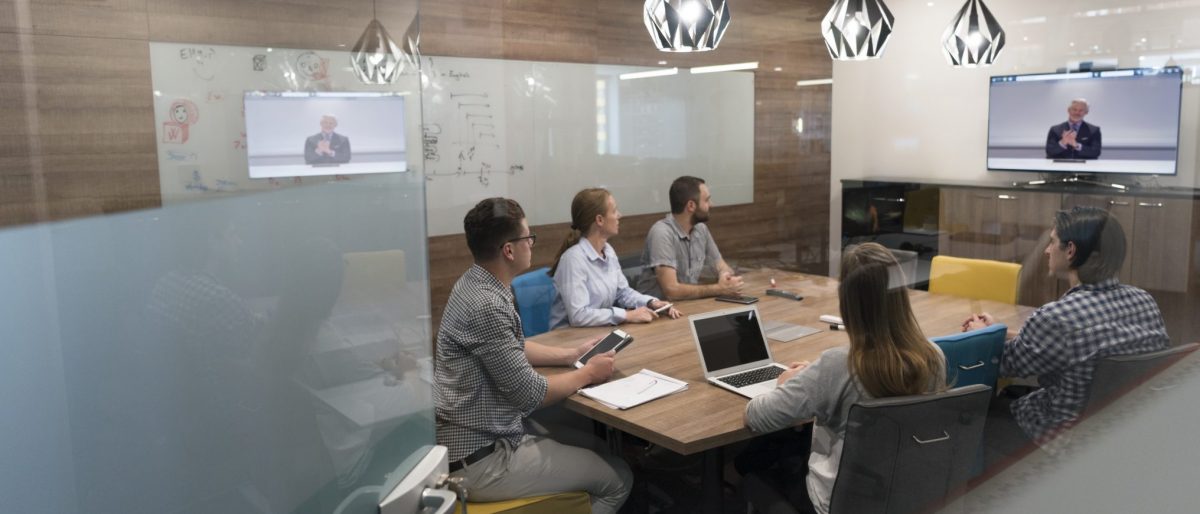Sometimes it isn’t coming up with a million-dollar idea that’s the hard part—it’s implementing and scaling your big ideas that present the challenge. Global AV deployments can create roadblocks to the very growth and innovation your company is trying to achieve. But with the right planning—and the right integration partner—you can overcome the most common challenges presented by large-scale, multi-country AV project deployment and support. Keep reading to find out how.
Solving the Most Common Global Deployment Challenges
Challenge 1: Data security. Security is always a priority for IT teams, but as more AV solutions are put on the network, security has become even more complicated. AV global deployment means more equipment running on more networks, as well as a greater need to communicate over these solutions.
Solution. Whether AV products are on their own network or the IT network, AV and IT teams should work collaboratively to test and evaluate AV products for potential security threats. Stay up to date on all recommended software and firmware updates identified by the AV product manufacturers and your PSNI Global Alliance integrator.
Challenge 2: Standardisation. Employees at your organisation should be able to walk into any room and operate the AV equipment without any issues or delays. This kind of standardisation is hard enough to achieve across a single enterprise location, but it becomes even more complicated when you have multiple offices spread across the globe.
Solution: The first step to successful standardization is identifying the functionality you need. Next, address differences in standards and product capabilities by working with local manufacturers and integrators that understand the standards and deployment requirements in each country. When designing a standardised multi-country system, be aware that some manufacturers’ products may not be available in every country. The PSNI Global Alliance includes local vetted integrators and technology partners all over the world that work together to design standardised and compatible solutions.
Challenge 3: Collaborative work environment. Video conferencing is now essential for supporting the flexible work options most employees expect. It is also key to creating a collaborative culture for global companies that need to connect teams in different cities and countries. JPMorgan Chase, for example, logs up to one billion minutes of conferencing time a year. However, achieving the necessary level of AV/IT convergence isn’t easy.
Solution: AV and IT teams should consider creating a communication plan to discuss collaboration needs and even develop a technology roadmap.

Challenge 4: Work culture. With 10,000 baby boomers reaching retirement age every day for the next 15 to 20 years—and the digital natives of Generation Z entering the workforce to replace them—business leaders are faced with accommodating work styles across generations and locations.
Solution: Implement solutions that allow flexible collaboration and an agile working environment. These should accommodate a wide range of personal and company-issued devices, including smartphones, tablets, and laptops. Securing data on company servers and providing employee access through mobile apps can alleviate the security concern of company data being stored on personal devices.
Challenge 5: Complicated user experience. More isn’t always better when it comes to AV deployments. Users get frustrated with solutions that are hard to use, don’t provide the functionality they need or vary from location to location. And companies can waste a lot of money paying for features that never get used at all.
Solution: Standardise and simplify AV deployments. All-in-one collaboration devices are a good example of solutions that are easy to use, install, and manage. Designing standardised AV solutions for each type of room will improve scalability while simplifying deployment. It also helps with global help desk and service support. Work closely with your AV integrator to clearly identify measurable goals and objectives for each collaboration location. When possible, use internal data to help establish and build predictive interactive outcomes.
Challenge 6: System monitoring. Monitoring hundreds of systems is complicated enough when they’re in the same time zone, but it’s more challenging when you must monitor hundreds of systems throughout multiple time zones.
Solution: System monitoring is another area where local integrators can help. Global rideshare company Uber, for example, relies on local AV integrators and manufacturers to streamline AV usage from region to region. Global monitoring is cost effective but local support is invaluable.
Challenge 7: Tariffs. Taxes and tariffs can change based on where your components and services come from, and where you assemble them. These rules can complicate your supply chains, and companies have to consider tax implications in the design, selection, sourcing, and assembly of components.
Solution: To eliminate unnecessary fees and taxes, work with a local AV integrator that has global experience.
